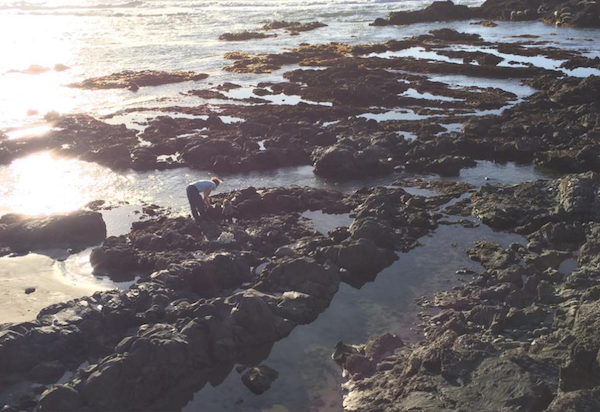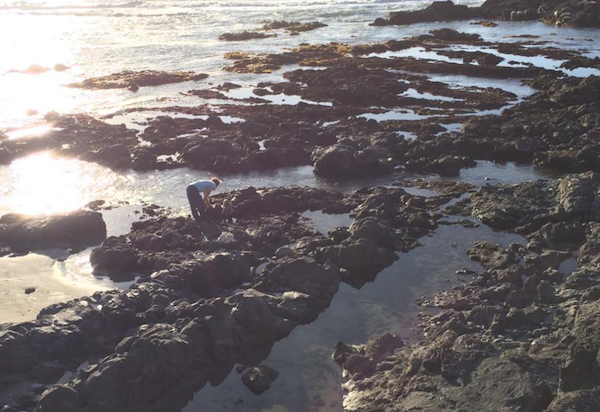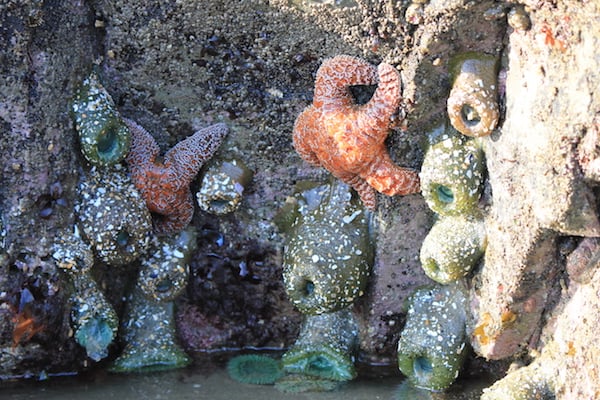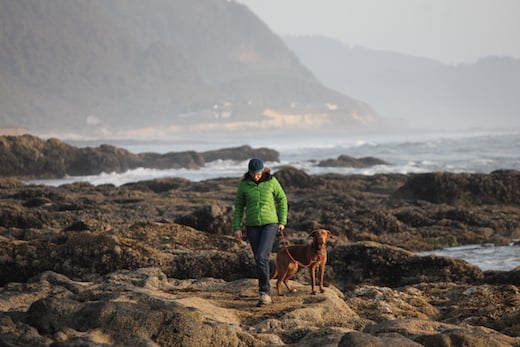
Surfrider Foundation is helping to lead a statewide process to update and amend Oregon's Territorial Sea Plan (Part III) Rocky Habitat Strategy. About 41% of Oregon’s land and sea boundary is comprised of tidepools, cliffs, rocks and submerged reefs supporting an ecologically rich and diverse environment and attracting millions of visitors each year. The Rocky Habitat Strategy provides a policy framework for all of Oreogn's rocky habitat in our territorial sea (0-3 nautical miles) to support coordination of management agencies. Additionally, the strategy identifies and designates special management areas such as Marine Gardens, Research Reserves and Habitat Refuges, that come with special regulations and protections, up and down Oregon's rocky coastal areas - explore them all here.
 Cape Perpetua's rocky shores are some of the most diverse intertidal areas on the planet
Cape Perpetua's rocky shores are some of the most diverse intertidal areas on the planet
Launching in the fall of 2017, the Department of Land Conservation and Development (DLCD) initiated the process through the Ocean Policy Advisory Council and a special working group where Surfrider Foundation plays a significant leadership role. Spanning much of 2018, a lengthy public process and needs/issues surveys helped inform the first phase of the process to update and amend the policy framework, which was adopted by the agency's commission this spring. This winter, the process enters a public proposal period whereby individuals, groups and organizations/agencies will be able to make recommendations to amend existing special management area designations or propose new designations. As such, it's likely that many Surfrider Chapters in Oregon will be asked by individuals and groups to engage in the proposal process - or may have members interested with current or new special areas management areas.
 A stunning array of seastars and anemones adorn a low tide wall at Otter Rock Marine Garden
A stunning array of seastars and anemones adorn a low tide wall at Otter Rock Marine Garden
Rocky habitats are extremely important to recreational users for a number of reasons from creating the bathymetry to shape a consistent wave to providing wind protection at headlands on those blustery summer north wind days. They are amazing opportunities for exploration and learning about our ocean and provide significant habitat important to many species of recreational, commercial and ecological importance. Because of Surfrider's role in the process and the grassroots base of recreational ocean users we represent, it's critical that we work closely with our network to effectively represent our diverse constituency of ocean users and help them engage in the process.

Given the upcoming public proposal period, the heavy capacity and potentially political burden it could demand, Surfrider Chapters and staff will be conducting outreach this fall/winter to develop a position statement and policy guidance for designations and the proposal process. Through a series of chapter meetings, workshops and member-based surveys this fall, we hope to gather some general consensus and guidance to help our grassroots base engagement in the upcoming process. While it isn't clear yet how our local Surfrider chapters' will want to engage in proposals or potential designations, there were some clear themes from our chapter outreach during the first policy phase of the process that we will begin to build off of. The following are save the dates for these chapter discussions and workshops with more details and dates coming soon:
Siuslaw Chapter (Florence): 08/28/19 - Evening, more details to come
North Coast Chapter (TBD): 08/29/19 - Evening, more details to come
Coos Bay Chapter (Coos Bay): 10/2/19 - Evening, more details to come
Surfrider encourages all individuals to explore the process website where you can find a wealth of additional information on how to engage in the state's public process. All of the working group meetings are open to the public and have public comment periods both within the meeting or you can email them in at any time. Working group activities, contacts, documents and meeting schedule can be found here: https://www.oregonocean.info/index.php/working-group
